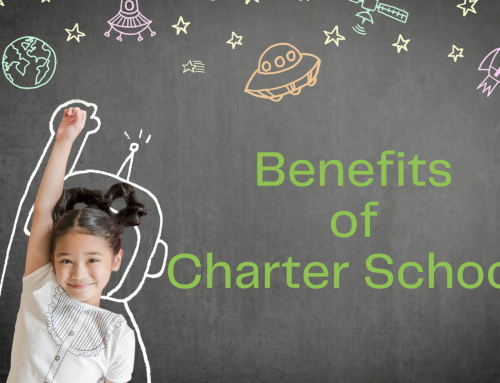 There is currently no mandate that schools closed due to the coronavirus pandemic must continue to serve free school meals for children. With 35 million children in the United States depending on food assistance daily, this could be a crisis within a crisis.
There is currently no mandate that schools closed due to the coronavirus pandemic must continue to serve free school meals for children. With 35 million children in the United States depending on food assistance daily, this could be a crisis within a crisis.
Surprisingly, many schools serving meals are reporting drops in the numbers of students showing up to receive meals. What this could mean for children’s nutrition during the coronavirus pandemic is complicated and potentially hazardous to children.
The Effects of Coronavirus School Closures
Both public and charter schools offer school meal assistance programs. 22 million low-income children in the U.S. rely on their school for meals. While many schools in California and across the country are still providing meals daily, less and less children are showing up daily to take advantage of the free meals. Whether these children are receiving adequate food and nutrition is unknown.
Considering many children fall into low-income brackets and were previously utilizing the programs when schools we open, the educated guess is that children may not be getting the food and nutrition that they need.
Why Aren’t Families Taking Advantage of Free School Meals During the Coronavirus Pandemic?
There is a myriad of reasons that children are not showing up to claim free meals after school closures due to coronavirus, but the no one has the facts yet.
The Cajon Valley Union School District in El Cajon, California is one of the poorest districts in the region, but it is reporting low turnout for meals during the coronavirus school closures. Since school closures, the district is reporting about 8,000 meals served a day, compared to the 13,000 meals served when schools were open to its 17,000 students. The fact that out of 13,000 students, 17,000 were receiving free or lost-cost meals puts into perspective how necessary the meal program is to the district’s students.
Financial, Physical and Time Constraints
There are many speculative reasons why parents and children are not taking advantage of free school meals, with most ironically being tied to financial burdens. Physically children and parents may not be able to get to meal locations during times when meals are being distributed. Parents may not be able to leave the household because of childcare duties, children might be being cared for by others in different locations, or for many other time and distance related reasons.
Lack of Information About Adequate Nutrition
Unsurprisingly, it can be very difficult for financially burdened parents to provide adequately nutritious meals. Whether it’s a lack of access to whole foods and fresh produce, not enough time to prepare nutritious meals or simply not being able to afford food, there are clearly preventing factors. In these instances, parents do what they can to feed their children, but are unknowingly not meeting their nutritional needs, which can have many negative consequences.
According to an article in the New England Journal of Medicine (NEJM), “meals and snacks from schools or child care centers fulfill up to two thirds of children’s daily nutritional needs and are generally healthier than those brought from home”. Children that are not having their nutritional needs met can suffer from physical conditions like fatigue or decreased immunity, as well as possible emotional, behavioral and cognitive effects that can further aggravate stressful conditions families may be feeling during the coronavirus pandemic.
Why Should Families Take Advantage of Free School Meals During the Coronavirus Outbreak?
Children who are affected by food insecurity will also be affected by emotional, psychological and long-term developmental consequences, according to the same NEJM article. Coupled with the affects of not getting adequate nutrition, these factors should be intellectual motivation for families to take advantage of free school meals, but financial and time constraints are still very difficult problems to solve.
To that end, many counties in California are making efforts to make getting free school meals easier and more convenient, attempting to understand and overcome the obstacles that are preventing children from receiving the meals they had come to depend on before the coronavirus school closures.
Where to Find Free School Meals in San Diego County
As of April 15, 2020, any child under 18 can receive food from any school that is offering meals during the coronavirus school closures, according to the San Diego Office of Education (SDCOE). To make finding these locations easier, SDCOE has created a school finder tool, which also includes San Diego Charter Schools. Note that each school will have specific times at which meals will be available.
Where to Find Free School Meals in San Bernardino County
In San Bernardino, there are seven public schools currently providing free breakfast and lunch to all children under 18 on Mondays and Wednesdays, from 11:30 a.m. to 1:30 p.m. Parents should note that in order to receive the free meals, children must be accompanied by an adult.
 In addition to the public schools, PAL Charter Academy is offering free breakfast and lunch from three locations, Monday through Friday from 11:30 a.m. to 2:00 p.m.
In addition to the public schools, PAL Charter Academy is offering free breakfast and lunch from three locations, Monday through Friday from 11:30 a.m. to 2:00 p.m.
Find Free Student Meals with the CA Meals for Kids Mobile App
The CA Meals for Kids Mobile App finds California Afterschool Meal Program, Summer Meal Program and Emergency Meal Program locations providing free meals for children. The app is available on Android, iOS and Microsoft devices. Locations providing free or low-cost meals can be searched according to city, county, zip code, physical location and name, as well as seen on an interactive map. The app is provided by the California Department of Education and seems to be English only but may not be too difficult for speakers of other languages to use.
There are additional filters to help users find the locations and programs that are best for them. The app pretty user friendly and has some additionally helpful features like being able to add/save favorites sites. The search function is well thought out and lists both public and carter schools in California.
Where to Find Meals for Kids Across the United States
The Food and Nutrition Service is a federal agency within the USDA that is tasked with facilitating the domestic nutrition assistance programs. To that end, the FNS created the USDA Meals for Kids Site Finder, which finds locations of free and reduced-priced meals for kids across the United States. Users can use the interactive map or search by zip code to find locations providing meals, as well as directions to those locations.
The locations listed that are serving meals seem to be limited to locations that participate in Summer Meal Programs, but these locations are currently serving meals in response to the coronavirus pandemic. Users would do well not to solely rely on this map for information and assistance, since there are other locations serving meals sponsored by other programs. That said, the USDA Meals for Kids Site Finder is also a great resource.
Federal and State Food Assistance Response to Coronavirus School Closures
There are a great many resources for children to receive free or reduced-cost meals within San Diego and San Bernardino counties, and within California. Considering many low-income children rely on school meal assistance programs for proper nutrition, it is alarming that school districts are reporting a lower turnout than anticipated, leading to an initial assumption that even if children are being adequately fed during coronavirus school closures, they may not be getting adequate nutrition.
There are additional programs being developed and launched such as the Families First Coronavirus Response Act and the Coronavirus Aid, Relief, and Economic Security (CARES) Act, which will provide additional funds and powers to the Supplemental Nutrition Assistance Program (SNAP).
Drawbacks & Political Agendas
Critics warn that there are also drawbacks since SNAP isn’t held to the same nutritional standards as the National School Lunch Program and School Breakfast Program. Additionally, changes in eligibility may affect or eliminate benefits for 1 million current participants. Some of the most concerning stipulations to these programs’ expansion during the coronavirus pandemic is a possible bias towards undocumented immigrants by either excluding them from benefits or possibly denying citizenship for those who use certain benefits.
Food Should Be Available to All, Especially During the Coronavirus Pandemic
The response of food assistance programs to families and children should be without political and social agenda. Many legislators and communities are working towards this goal with an overarching mission in mind – to feed children in need of nutritious meals and reduce food insecurity during the coronavirus epidemic.
For more related content on how coronavirus is affecting children and schools, check out our Coronavirus Resources page.




